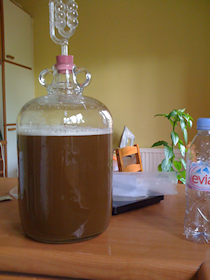Insomniac
Well-Known Member
Just how important is headspace when brewing beer?
I've made a few meads so far but am just about to attempt my first wheat beer.
I've gone for a "Brewers Choice" kit to start me off, which claims to make 23 litres of beer. I don't have any 5 gallon carboys/buckets or do I have space to keep any, which is why I went with this kit as I can split the ingrediant easily to make 5 1 gallon batches.
My question comes from the fact that on actually measuring the amount of liquid my carboys hold (to the bottom of the neck) is 4.8 litres.
As far as I can tell I have 2 options, make 4 x 4.8 litre batches and then only have enough left for a 3.8 L batch which will have a huge head space.
Or make 5 x 4.6 litre batches which have a moderate head space but more than I would like!
Any advice on this?
I've made a few meads so far but am just about to attempt my first wheat beer.
I've gone for a "Brewers Choice" kit to start me off, which claims to make 23 litres of beer. I don't have any 5 gallon carboys/buckets or do I have space to keep any, which is why I went with this kit as I can split the ingrediant easily to make 5 1 gallon batches.
My question comes from the fact that on actually measuring the amount of liquid my carboys hold (to the bottom of the neck) is 4.8 litres.
As far as I can tell I have 2 options, make 4 x 4.8 litre batches and then only have enough left for a 3.8 L batch which will have a huge head space.
Or make 5 x 4.6 litre batches which have a moderate head space but more than I would like!
Any advice on this?












![Craft A Brew - Safale S-04 Dry Yeast - Fermentis - English Ale Dry Yeast - For English and American Ales and Hard Apple Ciders - Ingredients for Home Brewing - Beer Making Supplies - [1 Pack]](https://m.media-amazon.com/images/I/41fVGNh6JfL._SL500_.jpg)














































